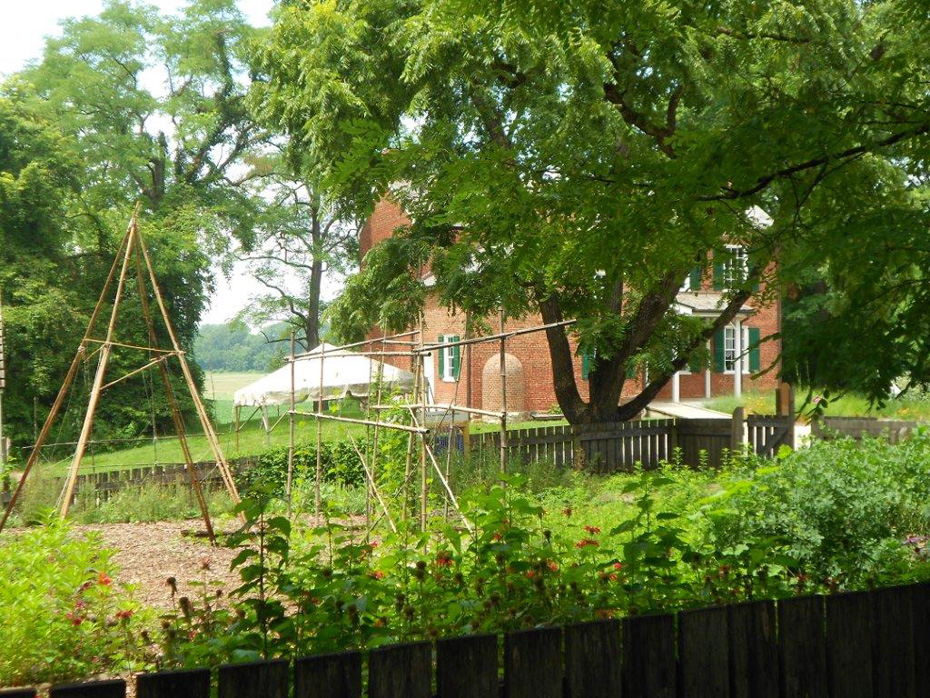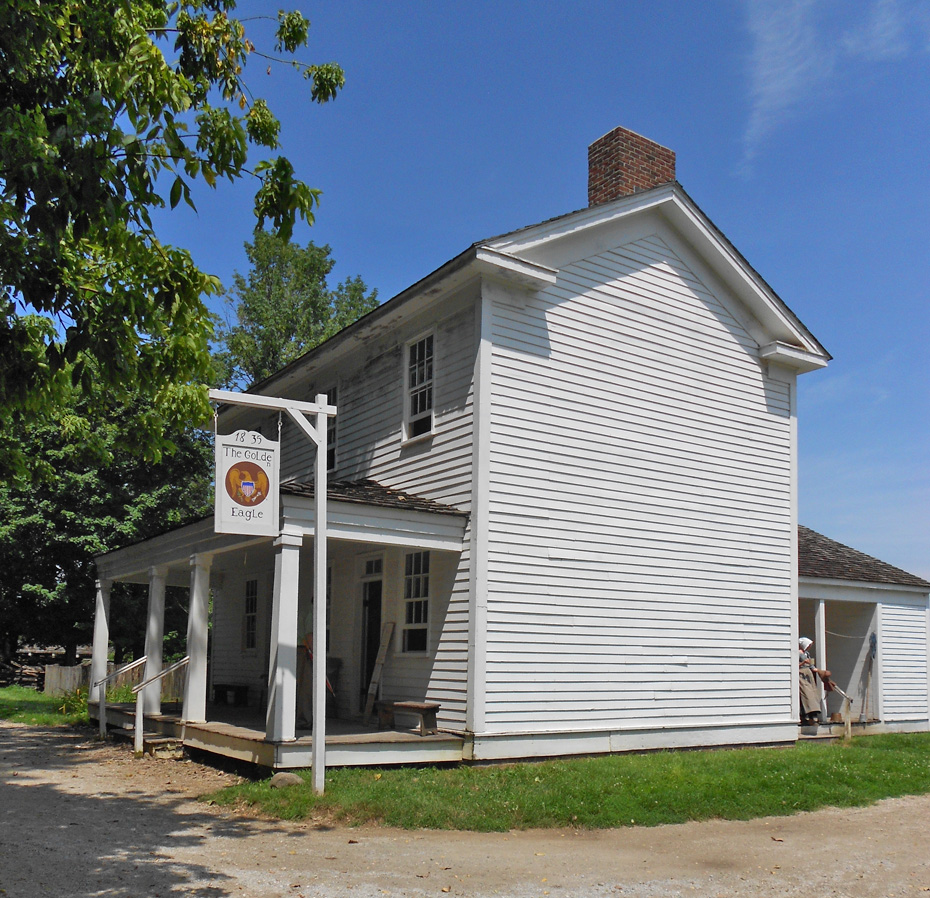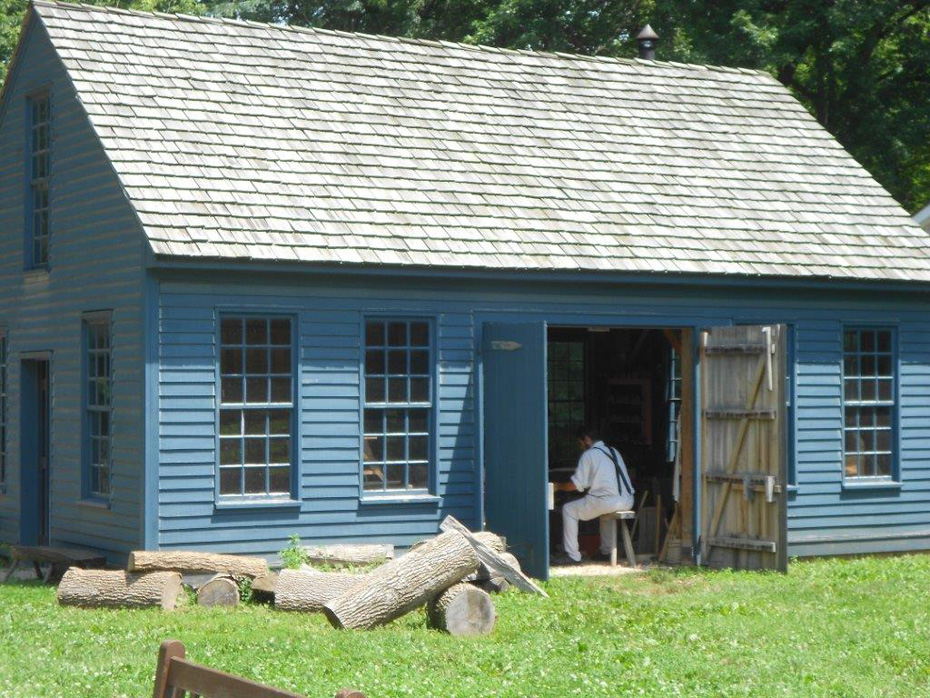
|
|
|
|
The site has a history dating back to the early nineteenth century when William Conner lived in a log cabin near the White River. He made a living trading furs with the Native Americans, and had a Native American wife, daughter of a chief, and six children. Conner was a skilled interpreter and scout, who assisted in negotiating many treaties with Native American tribes. One of those treaties resulted in the Delaware tribe's removal to west of the Mississippi. His wife and children moved west; he remained in Indiana. Conner quickly remarried and moved into the white world by building a large brick house in 1823 that became the social center of the area, even becoming the political center of newly-formed Hamilton County. He was a successful businessman, politician, and a noted part of the state's early history. Conner died in 1855. The house changed hands several times until 1934 when it and the surrounding lands were purchased for development of a living museum to retain American heritage through historical re-enactments. Since then it has developed into a top living museum that showcases Indiana history. The museum is a Smithsonian affiliate.
The title says the park is about 1836 Indiana history. It is, but that is misleading. The earliest and best-known part of the park, Prairietown, is all about 1836 Indiana history, but now there are many other themes across the prairie. To start with, the original William Conner House, one of the oldest brick houses in the state, still stands and is a highlight and center of the park. It is full of history, re-enactors, and lots of reproduced artifacts. They are not original so that the displays can be interactive, it's a very "touchy-feely place. What appears to be the front from the park is actually the rear. The true front is the side of the house that overlooks the 200-acre White River floodplain (the "prairie") from a bluff. Early visitors would have arrived from the river, not a parking lot. Nearby is the loom house and heirloom garden.
1836 Prairietown The town is full of characters, literally. All in
proper period costumes and all remaining in character at
all times. Time of day matters, they will be doing what
would naturally occur at that time. Unlike many living
museums, this one seemed to have a full array of
inhabitants. We were there on a weekday and were
surprised to see the town fully-populated. Other living
museums seem to use volunteers that mostly work on
weekends. Some of the people you are likely to
meet are:
The Whitakers run the general store. You must be friendly with him to get a good deal. The store contains goods from all over the world. Mr. Curtis is the town blacksmith. This is a crucial part of the town, as his skills keep the town in iron products and iron products in repair. His family is Methodists and abstains from hard spirits and the family does not think singing – outside of the church – to be proper. The forge keeps him busy, so at times he can't talk to you, as he is dealing with red hot iron. The pottery shop is run by Isaac and Jonathan Barker. They learned the trade from their father. The Barker cabin is nearby.
Sgt. Hasting's cabin may make you feel sorry for the poor man. He fought with General William Henry Harrison at Tippecanoe in 1811 and later became a farmer. He lost the farm and is now a pauper maintained by the county. The cabin is so meagerly furnished that he doesn't even have a bed, only a mattress on the floor. There is a one-room log schoolhouse. Students attend school for three months each year – November thru January – six days a week, from 7:00 a.m.to 4:00 p.m. There is also a carpenter shop. Mr. McClure was making axe handles while we were there.
Prairietown must be the highlight of Conner Prairie for most people. Every craftsman and tradesman was working while we were there. They all explained what they were doing, and often added personal insights of their lives and interactions with the other citizens of the town. When we expressed interest, we even got a tour of the smokehouse. Yes, there were hams in there!
|
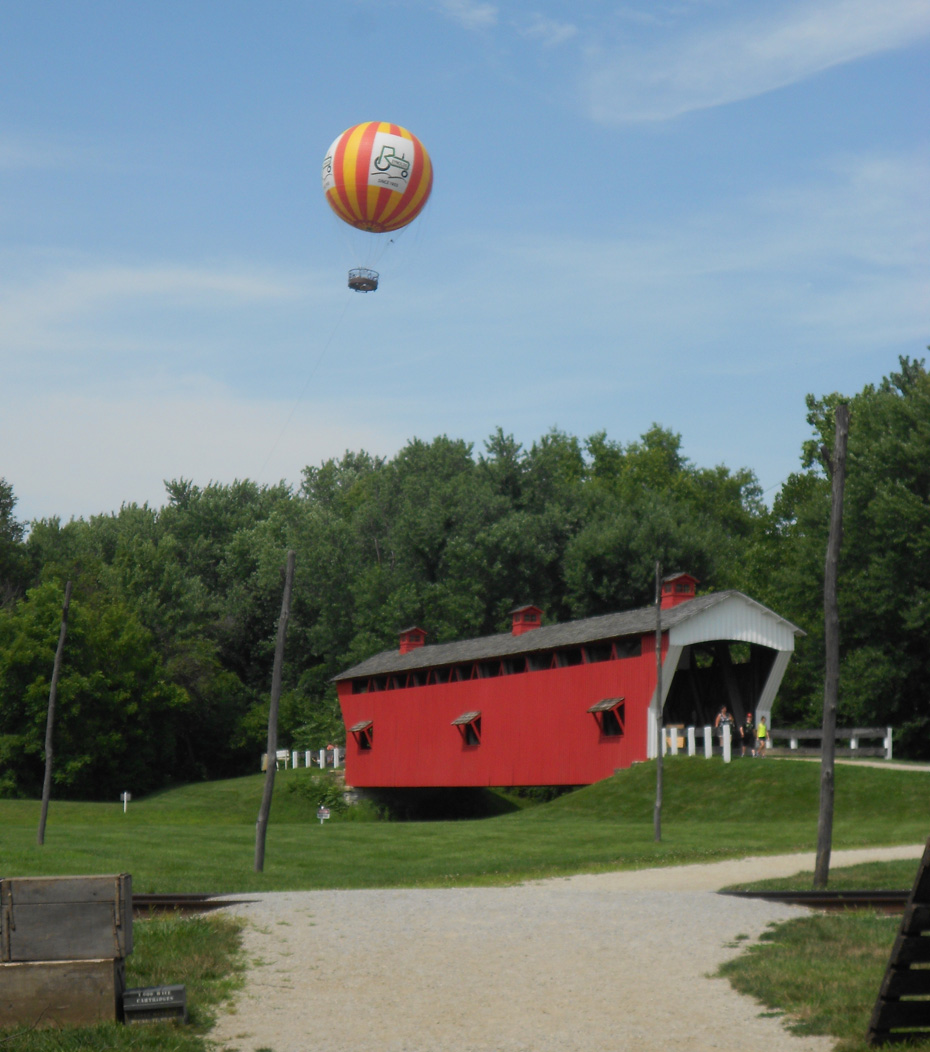 |
| The covered
bridge that leads into the Civil War Journey,
with the 1859 Balloon Voyage in the background. For scale, the balloon is far in the distance and is 105 feet in diameter and rises 350 feet above the ground (tethered). |
A covered bridge leads to Dupont, Indiana in July 1863,
shortly after Morgan's raid. You see and hear about the
raid from the locals. At the Dry Goods Store someone
from the Porter Family will describe the raid.
They have a copy of a telegram from the governor
advising citizens to barricade the town and defend from
the rebels.
We mentioned we'd come up from South
Carolina; the Porter's were none too friendly after
that. You might also meet Albert Cheatham, who
fled slavery early in the war by heading north. There is
even a chance you'll meet General Morgan while on the
Civil War journey. The schoolhouse has been taken
over by the Union Quartermaster and serves as a
temporary telegraph office for the Union troops. There
is a field hospital. The most impressive part of the
journey is a multi-media presentation, including
holograms, that give details of the raid. It ends with a
cannon blast in a dark room that blows a hole through
the wall. Sunlight filters into the room through the
cannonball hole; what a way to end a story!
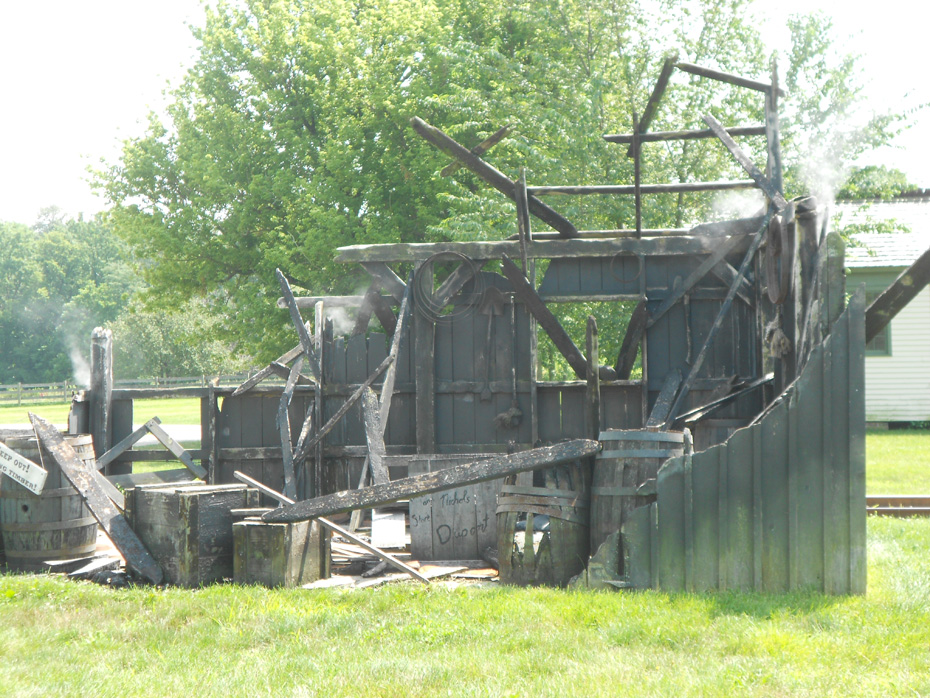 |
| The smoldering ruins in downtown Dupont, Ind. after Morgan's raid. |
Lenape Indian Camp and 1859 Balloon Voyage
Around another corner is a Lenape, or Delaware, Indian camp. It is a chance to learn something of Native American culture. It includes trading post, wigwams, and a cabin. We spent time learning about Native American beadwork. The 1859 Balloon voyage leads you to the middle of Lafayette, Indiana to explore the history of manned flight, discover the rigors of airmail by balloon, and get a close look at all the work required to lift a balloon into the sky. The culmination of this experience is a chance to step into the gondola of a tethered balloon and be lifted 350 feet over Conner Prairie.
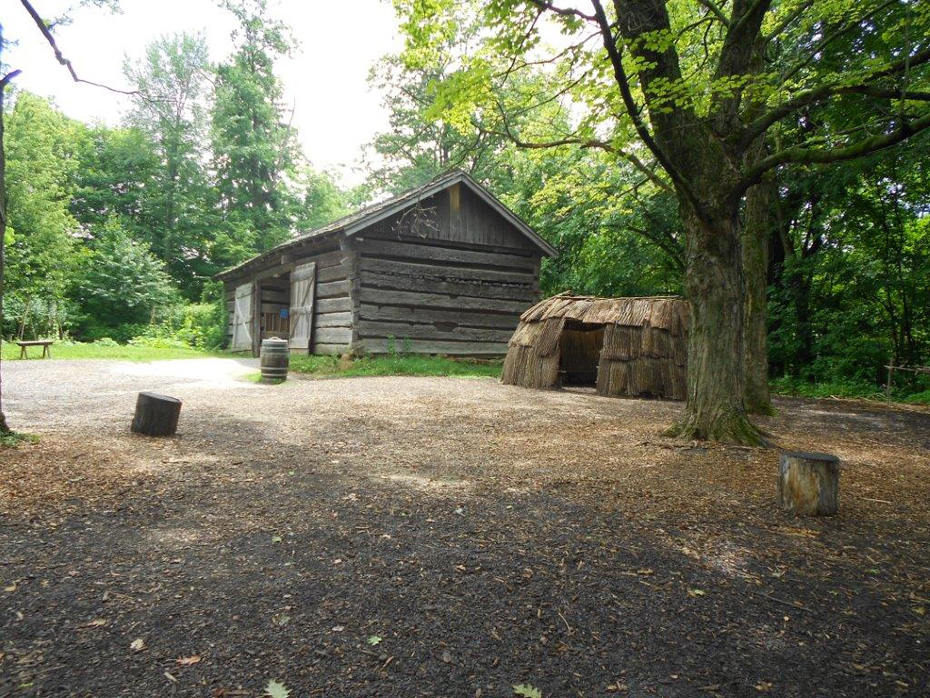 |
| Wigwam and cabin at Lenape Indian Camp. |
More for the kids is a treetop outpost, with a treetop workshop, treehouse, nature walk, and lookout. There is also an animal encounter barn with very tame animals for the kids to meet. There is lots of other stuff for kids to do at the park, both inside and outside. The food at the Café on the Common turned out to be great. It is a huge place and you can easily spend a day there and still feel like you missed something. As living museums go, this one would get a grade of "A."
For more information:
Conner Prairie Interactive History Park Home
http://www.connerprairie.org/places-to-explore
New York Times Review of Park
http://www.nytimes.com/2011/06/22/arts/design/conner-prairie-interactive-history-park-review.html
Connect with us on:
   |
   |
American Roads and
Global Highways has so many great articles you
may want to search it for your favorite places
or new exciting destinations.
Public Disclosure-- Please Read
I recently learned of a FTC law requiring web sites to let their readers know if any of the stories are "sponsored" or compensated. American Roads and Global Highways' feature writers are professional travel writers. As such we are frequently invited on press trips, also called fam trips. Most of the articles here are results of these trips. On these trips most of our lodging, dining, admissions fees and often plane fare are covered by the city or firm hosting the trip. It is an opportunity to visit places we might not otherwise be able to visit and bring you a great story. However, no one tells us what to write about those places. All opinions are 100% those of the author of that feature column.
Privacy Policy/ Archives /
Contributors /
Subscribe to
American Roads Books by
Kathleen Walls /
Contact /
Sponsor or Advertise/ American Roads & Global Highways Home Page
Copyright 2017 AmericanRoads.net, all rights reserved |


